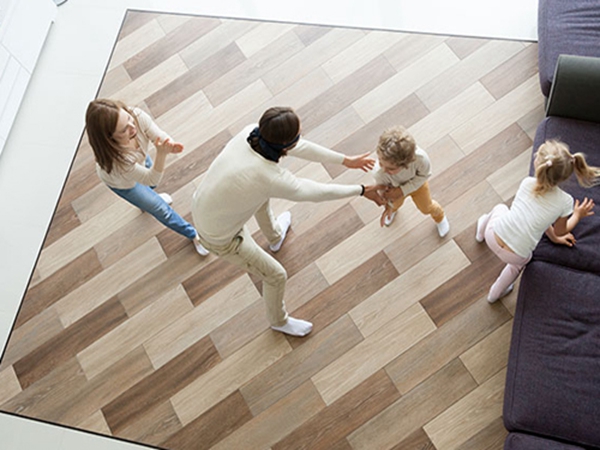
LVT flooring has revolutionized the way we think about flooring options, offering durability, style, and versatility. Among various types of LVT flooring, dry-backed LVT stands out for its unique installation method and excellent performance. In this article, we delve into the world of dry-backed LVT flooring, exploring its features, benefits, application, and maintenance tips.
Dry-backed LVT flooring consists of vinyl tiles or planks with a dry adhesive backing. This adhesive is activated during installation to form a strong bond with the subfloor. The installation process involves applying adhesive directly to the subfloor and pressing the tiles or planks into place. Dryback LVT flooring is known for its durability, water resistance, and wide range of design options, making it a popular choice for residential and commercial spaces.

One of the main advantages of dry back LVT flooring is its affordability compared to other types of LVT flooring. Additionally, its versatility allows installation in a variety of environments, including high-traffic areas. Maintenance is also relatively easy, requiring regular cleaning and avoiding damage and scratches.
Dryback LVT flooring differs from snap-on and loose LVT flooring in terms of installation method and stability. Snap-lock LVT installs easily without adhesives, while dry-back LVT bonds more firmly to the subfloor. Loose LVT, on the other hand, relies on friction to stay in place and may not be suitable for high-traffic areas.
Dry-backed LVT flooring is suitable for both residential and commercial environments. Its durability and water resistance make it ideal for kitchens, bathrooms, and other moisture-prone areas. In commercial spaces, dry back LVT can withstand the rigors of heavy foot traffic while maintaining its appearance over time.
Dryback LVT flooring provides a durable, stylish, and affordable flooring option for residential and commercial spaces. Its unique installation method, combined with impressive performance features, makes it an outstanding choice in the LVT flooring space. By understanding its features, benefits, applications, and maintenance requirements, homeowners and businesses can make informed decisions when considering dryback LVT flooring for their spaces.